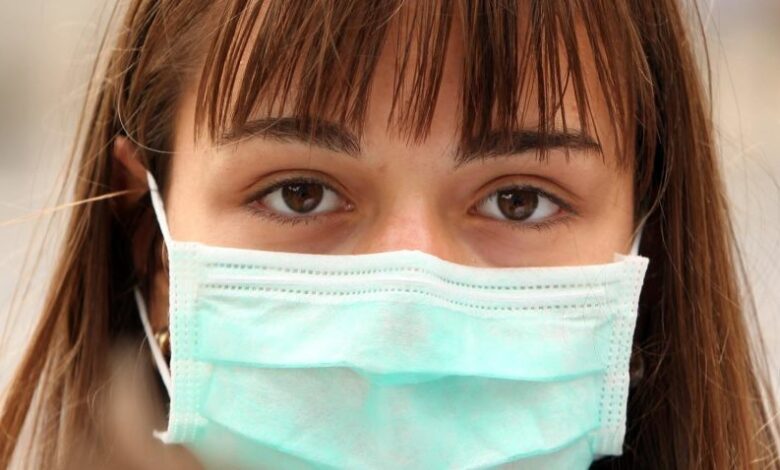
In the US, flu activity is currently low, as it usually is this time of year. The Covid-19 pandemic made flu season a little less predictable, but people generally don’t start getting sick until around October, and doctors’ offices don’t get really busy until somewhere between December and February.
In the Southern Hemisphere, where it’s now winter, cases began increasing “sharply” in early May, the Australian Department of Health and Aged Care said Friday. It’s an earlier start of the season than some years; case numbers are higher than the five-year average, the agency said, but lower than around this time in 2019 and 2022.
Scientists are also watching the number of cases in kids. More children in Australia appear to be getting sick than other age groups this year.
American scientists typically look to Australia and some other countries to try to anticipate exactly how bad the flu will get in the US during its fall and winter.
“We closely monitor what happens in countries throughout the Southern Hemisphere this time of year, just to see what’s happening during their flu season. It’s not always a predictor of what’s going to happen here the next season, but yes, we do. We do closely monitor that all summer long,” said Carrie Reed, chief of the Influenza Division of the US Centers for Disease Control and Prevention’s Epidemiology and Prevention Branch.
Flu is an important virus to monitor because it makes so many people sick and costs the nation so much money. But some people may dismiss its seriousness because it is seasonal and everyone gets it at least once in their lifetime.
The CDC estimates that the flu caused 9 million to 41 million illnesses, 140,000 to 710,000 hospitalizations and 12,000 to 52,000 deaths every year between 2010 and 2020. It costs the US about $10.4 billion in direct costs for hospitalizations and outpatient visits, the agency said, and that’s only among adults.
For about a decade, Reed said, the CDC has had a formal forecasting effort that’s a collaboration with several academic groups and private industry that specialize in flu forecasting and modeling. The data comes from clinical labs, emergency departments, hospital networks and death certificates.
The groups submit their flu data each week. The CDC compiles it, analyzes it and creates public reports that track the trends. The forecasts have become more useful over time, Reed said.
“We’ve learned a lot, and we’ve improved a lot over the years,” she said. “Flu is a very interesting pathogen to deal with. Every flu season is a little bit different. The virus is constantly evolving. And so every year, it is a new challenge.”
While hundreds of scientists and millions of dollars are dedicated to predicting what the US flu season could look like, data showing an early, intense season in Australia doesn’t necessarily mean the same on this side of the planet, computational scientist Thomas McAndrew said. Nor are prediction models so detailed that scientists could say there will be a spike in flu germs in, say, Chicago on September 12.
“We only have a couple of days out on weather at best,” said McAndrew, an assistant professor in the Department of Community and Population Health at Lehigh University. “Flu is so difficult to predict because predicting what any infectious disease will do is predicting human behavior.”
Humans do some predictable activities that spread the flu: Children go to school every fall; families travel to gather for the holidays. But thousands of people could also start wearing masks after seeing someone influential like Taylor Swift tweet a picture of herself wearing one in a city with high flu numbers, and a behavior change like that among enough people could cause flu case numbers to drop.
“There’s so many things that go into predictions,” McAndrew said. “It would be nice if everyone was in the same room and everybody bounces and connects with everybody for the same period of time with the same weather, so we could precisely calculate how the flu would spread, but it doesn’t work that way. The way it spreads, it’s such a human thing.”
It’s a multifaceted problem to predict the flu, the CDC’s Reed said.
“It’s a mix of human behavior, social interactions, mobility, but also weather humidity, population immunity. So yeah, it’s complex.”
This year too, the US could face an entirely new element that could change the trajectory of the virus, said Dr. William Schaffner, a professor in the Division of Infectious Diseases at Vanderbilt University Medical Center and medical director of the National Foundation for Infectious Diseases.
“Looking at this fall, we are going to have a special challenge because, in addition to urging everyone to get their annual influenza vaccine, we’re going to have a new updated Covid vaccine that will be available. And in addition to that, two new RSV vaccines just have been licensed. And in a week and a half or so, the CDC’s advisory committee will provide recommendations as to who ought to get that vaccine, and it’s going to be at least older adults. So some people will be recommended to get not just one, not just two, three vaccines,” he said.
Whether adults will actually go for all three shots remains to be seen. If many people opt out of the flu vaccine, cases could rise.
Vaccinations have been a challenge since the pandemic. Covid-19 fueled what the World Health Organization called the “largest continued backslide in vaccinations in three decades” for children, not just for Covid vaccines but also for other lifesaving shots. That may be part of what is causing so many flu cases among Australia’s children, a spokesperson in the agency’s Department of Health and Aged Care said – not as many kids were getting vaccinated against the flu.
So while Reed and her colleagues will be watching Australia’s flu numbers and running their calculations, it’s still not totally clear what 2023’s flu season will bring for the US.
“It’s pretty early so far to predict what the upcoming season might be,” Reed said. “There’s lots of things that could change between now and when we start seeing more flu activity.”




